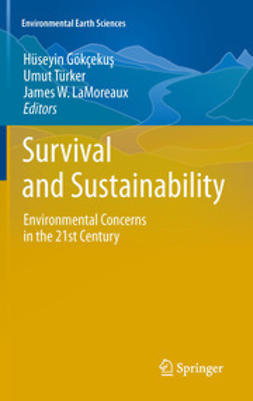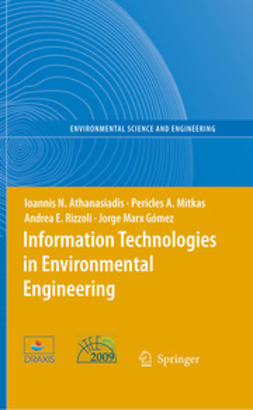Byrne, Loren B.
Learner-Centered Teaching Activities for Environmental and Sustainability Studies
1. Learner-Centered Teaching for Environmental and Sustainability Studies
Loren B. Byrne
Part I. Conceptual Foundations and Frameworks
2. Which Is Most Sustainable? Using Everyday Objects to Examine Trade-Offs Among the “Three Pillars” of Sustainability
Corina McKendry
3. An Introduction to Systems Thinking Using Plastic Dinosaurs
Laura A. Hyatt
4. An Introductory Examination of Worldviews and Why They Matter for Environmental and Sustainability Studies
Loren B. Byrne
5. Building Resilience: Modeling Resilience Concepts Using Legos
Courtney E. Quinn, John E. Quinn
6. Eco-crimes and Eco-redemptions: Discussing the Challenges and Opportunities of Personal Sustainability
Mercedes C. Quesada-Embid
7. Engaging with Complexity: Exploring the Terrain of Leadership for Sustainability
Matthew Kolan
8. Discovering Authentic Hope: Helping Students Reflect on Learning and Living with Purpose
Kimberly F. Langmaid
9. Teaching How Scientific Consensus Is Developed Through Simplified Meta-analysis of Peer-Reviewed Literature
Emily S. J. Rauschert
Part II. Ecology, Ecosystems and Environmental Management
10. Understanding Ecosystems and Their Services Through
Carmen T. Agouridis, Tyler M. Sanderson
11. Using Soil Organisms to Explore Ecosystem Functioning, Services, and Sustainability
Jessica Baum, Rachel Thiet
12. Fire, Pollution, and Grazing: Oh My! A Game in Which Native and Invasive Plants Compete Under Multiple Disturbance Regimes
Heather E. Schneider, Lynn C. Sweet
13. Exploring Trophic Cascades in Lake Food Webs with a Spreadsheet Model
Kyle A. Emery, Jessica A. Gephart, Grace M. Wilkinson, Alice F. Besterman, Michael L. Pace
14. Ants, Elephants, and Experimental Design: Understanding Science and Examining Connections Between Species Interactions and Ecosystem Processes
Christine M. Stracey
15. Teaching Lyme Disease Ecology Through a Primary Literature Jigsaw Activity
Jae R. Pasari
16. A Fishery Activity to Examine the Tragedy of the Common Goldfish Cracker
Jessa Madosky
17. Making Biodiversity Stewardship Tangible Using a Place-Based Approach
Christine Vatovec
18. Conservation Triage: Debating Which Species to Save and Why
Loren B. Byrne
19. Everything Cannot Be Equal: Ranking Priorities and Revealing Worldviews to Guide Watershed Management
Bethany B. Cutts
20. Location, Location, Location! Analyzing Residential Development in Environmentally-Fragile Areas
Erica A. Morin
Part III. Consumption, Economics and Energy
21. Tasting Sustainability: Using Multisensory Activities to Retune Food Preferences
Jennifer Gaddis
22. Relationships Between Consumption and Sustainability: Assessing the Effect of Life Cycle Costs on Market Price
Madhavi Venkatesan
23. Business Sustainability and the Triple Bottom Line: Considering the Interrelationships of People, Profit, and Planet
Marilyn Smith
24. A Triple-Bottom-Line Analysis of Energy-Efficient Lighting
Timothy Lindstrom, Catherine Middlecamp
25. Go with the Flow: Analyzing Energy Use and Efficiency in the USA
James D. Wagner
26. Exploring Complexities of Energy Options Through a Jigsaw Activity
Nathan Hensley
Part IV. Environmental Justice and Pollution
27. Introducing the Conflicting Meanings of “Justice” Using a Candy-Distribution Exercise
Kate J. Darby
28. Beyond Band-Aids: Using Systems Thinking to Assess Environmental Justice
Meghann Jarchow
29. Engaging the Empathic Imagination to Explore Environmental Justice
Joseph Witt
30. Helping Students Envision Justice in the Sustainable City
Joshua Long
31. Social-Ecological Systems Mapping to Enhance Students’ Understanding of Community-Scale Conflicts Related to Industrial Pollution
Curt Dawe Gervich
32. The Skies, the Limits: Assessing the Benefits and Drawbacks of Tighter US Soot Emission Standards
Sandra L. Cooke
33. Don’t Blame the Trees: Using Data to Examine How Trees Contribute to Air Pollution
Patrick W. Crumrine
Part V. Information Literacy and Communication
34. Evaluating the Effectiveness of Green Roofs: A Case Study for Literature Research and Critical Thinking
Erika Crispo
35. The Story of Source Reliability: Practicing Research and Evaluation Skills Using “The Story of Stuff” Video
J. J. LaFantasie
36. Critically Evaluating Non-Scholarly Sources Through Team-Based Learning
Nathan Ruhl
37. Using the Insight, Question, and Challenge (IQC) Framework to Improve Students’ Environmental Communication Skills
Seaton Tarrant
38. Building Students’ Communication Skills and Understanding of Environmental and Sustainability Issues Interactively and Cumulatively with Pecha Kucha Presentations
Bonnie McBain, Liam Phelan
39. Engaging in Climate Change Conversations: A Role-Playing Exercise to Cultivate Effective Communication
Stephen Siperstein
40. Writing Letters to the Editor to Promote Environmental Citizenship and Improve Student Writing
Andrew J. Schneller
41. Captioning Political Cartoons from Different Perspectives as a Tool for Student Reflection
Katharine A. Owens
42. Analyzing Nature as a Persuasive Tool in Advertisements
Rebecca Duncan
43. Making and Assessing Art in the Sustainability Classroom
Bruno Borsari
Keywords: Environment, Sustainable Development, Learning & Instruction, Science Education, Literacy
- Editor
- Byrne, Loren B.
- Publisher
- Springer
- Publication year
- 2016
- Language
- en
- Edition
- 1st ed. 2016
- Page amount
- 20 pages
- Category
- Natural Sciences
- Format
- Ebook
- eISBN (PDF)
- 9783319285436
- Printed ISBN
- 978-3-319-28541-2











